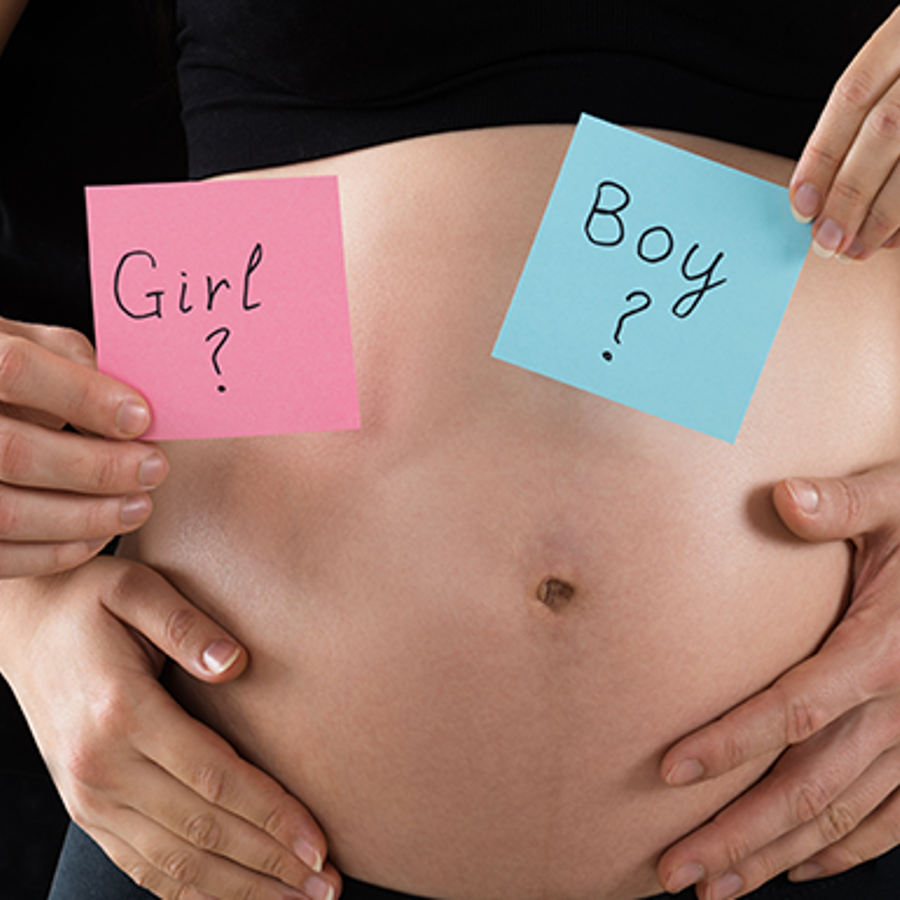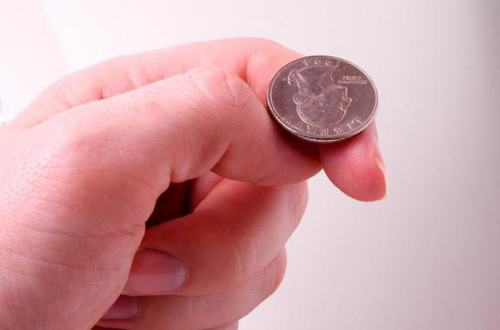
Which parent decides whether a baby will be a boy or a girl?
April 5, 2012

- Related Topics:
- Genetic sex,
- Reproduction,
- Sex ratio,
- Animal biology,
- Common questions
A curious adult from Great Britain asks:
“Which parent decides whether a baby will be a boy or a girl?”
Neither parent gets to decide. Almost everyone has around a 50% chance of having a boy and a 50% chance of having a girl.
What we can say is that dad's sperm determines whether a baby will be born as a boy or a girl. About half of his sperm will make a boy and half a girl. The sex of the baby depends on which sperm gets to the egg first.
In a perfect world, it would all be up to chance. Both types of sperm would have an equal chance of reaching the egg first. And once fertilized, each type of egg would have an equal chance of developing fully into a baby.
But as you know, the world is not perfect. Certain factors can influence the sex of the child. As you'll see below, there is much more evidence of this happening in the animal world but it happens in people too.
In humans, slightly more boys are born each year than girls. But it’s hard to say exactly why this happens.
One old theory was that sperm that carry the tiny Y chromosome are slightly speedier than sperm carrying the larger X chromosome. So Y-carrying sperm could be a bit more likely to make it to the egg first. But it turns out that this probably isn’t true. Sperm carrying a Y seem to swim the same speed as sperm carrying an X.1
But other factors like how mom or dad lives can affect the sex of their baby. A number of studies have suggested that factors like nutrition, wealth, and even where the parents live can affect the odds of having a boy or a girl. But none of these effects is very large.2
For example, moms that ate cereal every morning had a boy 59% of the time while moms that rarely ate cereal had boys only 43% of the time.3 However, this doesn't mean that you should change your diet to increase your odds either way.
We don't know for certain that cereal is the cause of the difference. Perhaps women who tend to eat cereal have other shared qualities and it's one of these that affects whether they'll have a boy or not. And as you can see, whatever the reason the effect is tiny.
This is true of most outside factors like this in people. For us the sex of the child is mostly determined by which of dad's sperm makes it to the egg first.
Let's look a little closer at how the X and Y chromosomes determine sex. Then we'll explore why we see differences in the numbers of girls and boys in many families.
X (or Y) Marks the Sex
Both men and women have sex chromosomes. Men usually have one X and one Y chromosome, while women usually have two X's.
When an egg or sperm is made, it only gets one of the sex chromosomes from the parent. This means that women can only make eggs with an X chromosome. But men can make either X or Y sperm.
During fertilization, the sperm cells race toward the mother-to-be's egg cell. If a sperm with a Y beats all others, then the fetus will be XY. The pregnancy will result in a boy.
However, if a sperm with an X wins the race to the egg, then the fetus will be XX. The parents will have a baby girl.
Nearly everyone's chances are around 50% for having a boy and 50% for having a girl. And yet, we all know families that are all boys or all girls.
Too Many Brothers (or Sisters)
Having all boys or all girls is almost always due to simple chance. It is only rarely that parents have one sex more often than another for some underlying biological reason.
You've probably flipped a coin to make a decision between two things before. When you flip a coin, you have a 50% chance for heads and a 50% chance for tails. These are about the same odds as having a boy or a girl.
What if you flip a coin ten times and get heads every time? What are the odds for heads on the next coin flip? Still 50%.
In a coin flip, it doesn't matter what came before. This is because the coin can't remember what was previously flipped.

The same thing is true in having a boy or a girl. Mom's body can't remember what sex the previous child was. So the chance of one child being a boy or girl is independent of any other child’s gender in the family.
It's just a matter of which type of sperm happens to reach the egg first. In families that have all boys or all girls, it turned out to be the same one each time. And if they decide to have another child, the chances are 50-50 that the baby will be a girl versus a boy.
In the real world, though, more than chance is involved. As we talked about earlier, other factors can affect which sperm makes it to the egg and whether the fertilized egg goes on to be a healthy baby.
Most factors in people are thought to be very small though. Remember how we said that more boys are born than girls because of the speedier boy sperm? Well the difference is actually not that big...51% of all newborns in the U.S. are boys.4
However, the animal world is a whole different story. All sorts of things can happen so that more boys are born than girls and vice versa.
Animals with Wacky Sex Ratios
Based on a number of factors, some animals alter the sex ratio of their offspring. Buffalo in Africa have mostly sons when it rains and more daughters when the climate is dry. This might be because there's more to eat in the rainy season and sons need more food to grow, so it's better to have girls when there's less food.5
Many reptiles also have sex ratios that depend on the environment. For alligators, sex depends on the temperature at which the eggs incubate. If it's cooler, then all girls are hatched. But if it's warmer, then all boys are hatched.6
Some birds can influence whether they hatch a male or female chick. Peafowl can vary the percentage of girls anywhere from 25 to 87%.7
And it only gets weirder. One fish called the bluestreak cleaner wrasse hangs out in groups of about 8 females and 1 male. If the male dies, then the strongest female turns into a male!8 It just so happens that the same thing occurs with clownfish like Nemo.9
There are many more examples of this in nature, and a lot of it depends on survival of the species. For humans, our best ratio seems to be equal numbers of males and females.


Author: Amy Johnson
When this answer was published in 2012, Amy was a Ph.D. candidate in the Department of Biology, studying mammalian cell cycle control in Jan Skotheim’s laboratory. Amy wrote this answer while participating in the Stanford at The Tech program.
 Skip Navigation
Skip Navigation
